Some of you may have already loved houseplants, or maybe you just started getting into houseplants as a new hobby with all the extra time spent indoors. Common House Plants will always have a place in any home, office, kitchen, or bathroom.
They make almost any space comfortable and approachable. Not only that, but they can also make any dull areas brighter and more lively.
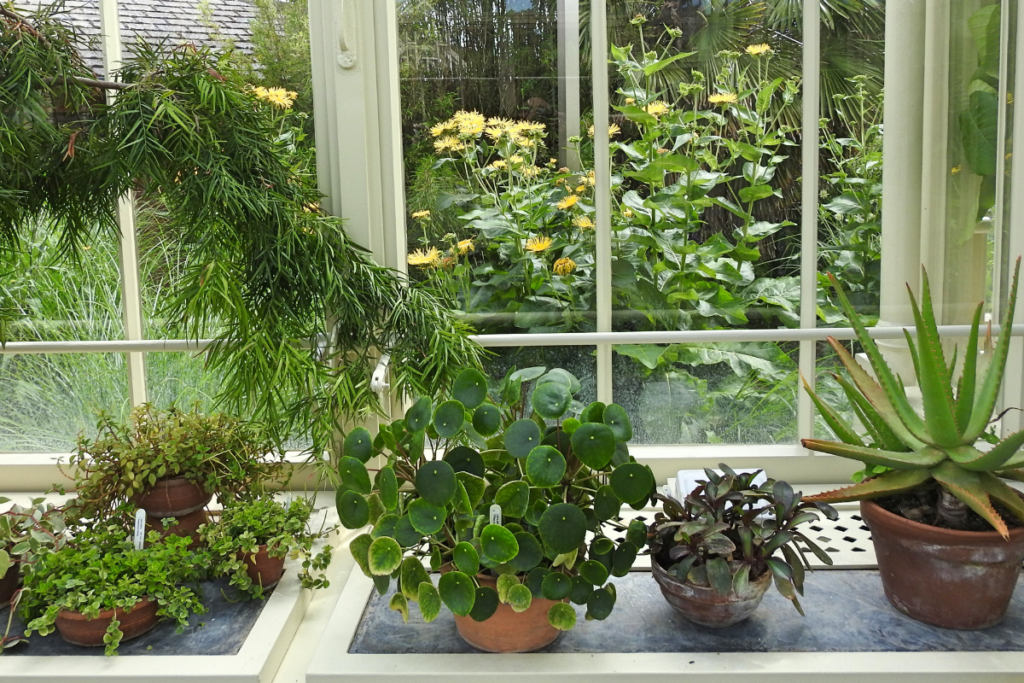
What does a houseplant need to thrive indoors?
As is with any houseplant spending possibly the entirety of its life indoors, the most crucial factor to consider is the amount of light the plant will receive. If a plant requires bright and indirect light, you just cannot place that plant at your dimmest corner and hope for the best. It is also true that you cannot place a low-light plant near your brightest windowsill.
Another factor is to ensure watering according to your plants’ needs. Be sure to consider the general climate your plant is in, as colder and more humid places may make your plant less needy of water as compared to warmed and arid locations.
Below we have listed some of the most common houseplants that can get you started on your journey. Good news! Many of the plants in this list are familiar, popular, cheap, and do not require pampering of any sort.
1. Pothos
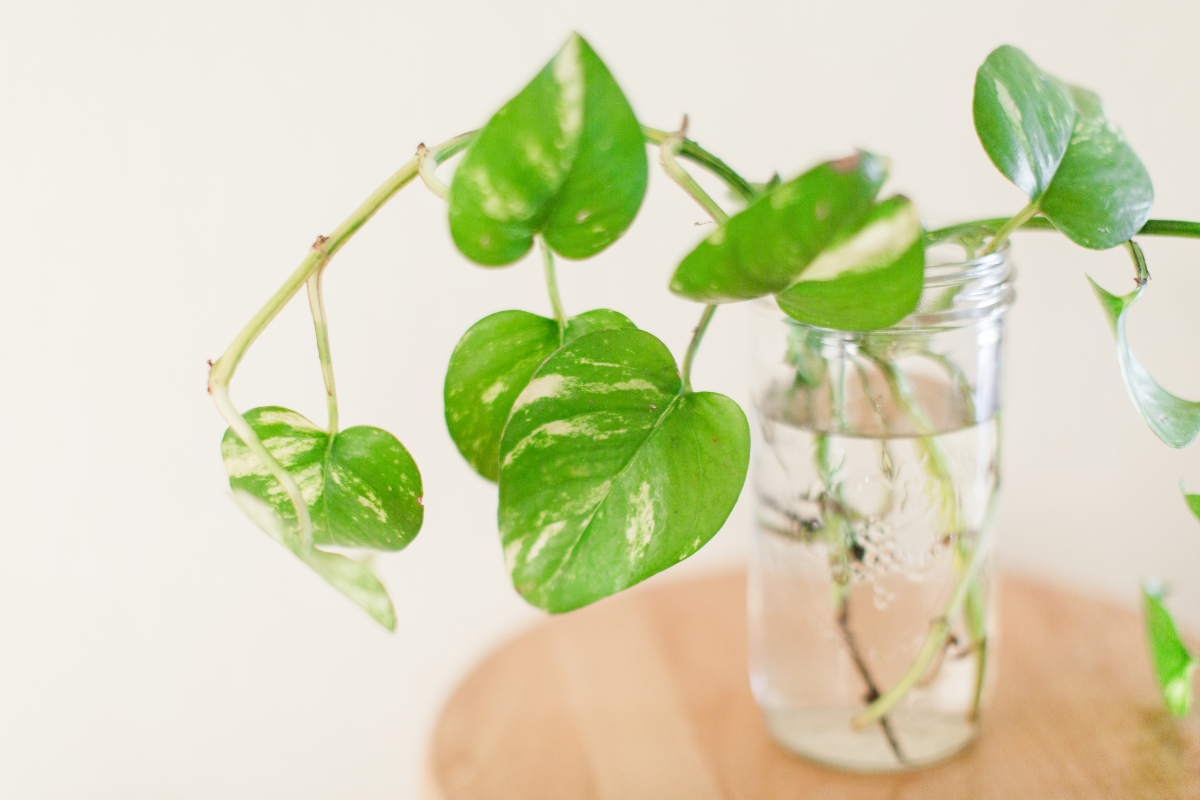
There is no other famous houseplant other than the Pothos itself. It is considered. by most to be the one of the best ways to get started in taking care of houseplants. It will crawl over any ledge you put it in and brighten up any living or office space and is a perfect way to bring nature into your own home.
Caring for the Pothos is effortless. They happily thrive in a comprehensive set of environments; they do well in bright, indirect, and low to medium light. They will grow in dry soils or containers of water and thrive in nutrient-rich and nutrient-poor soils.
So if you’re looking to get started with growing your green thumb, look no further than the Pothos! It will take care of you without you even having to take care of it that much.
2. Snake Plant
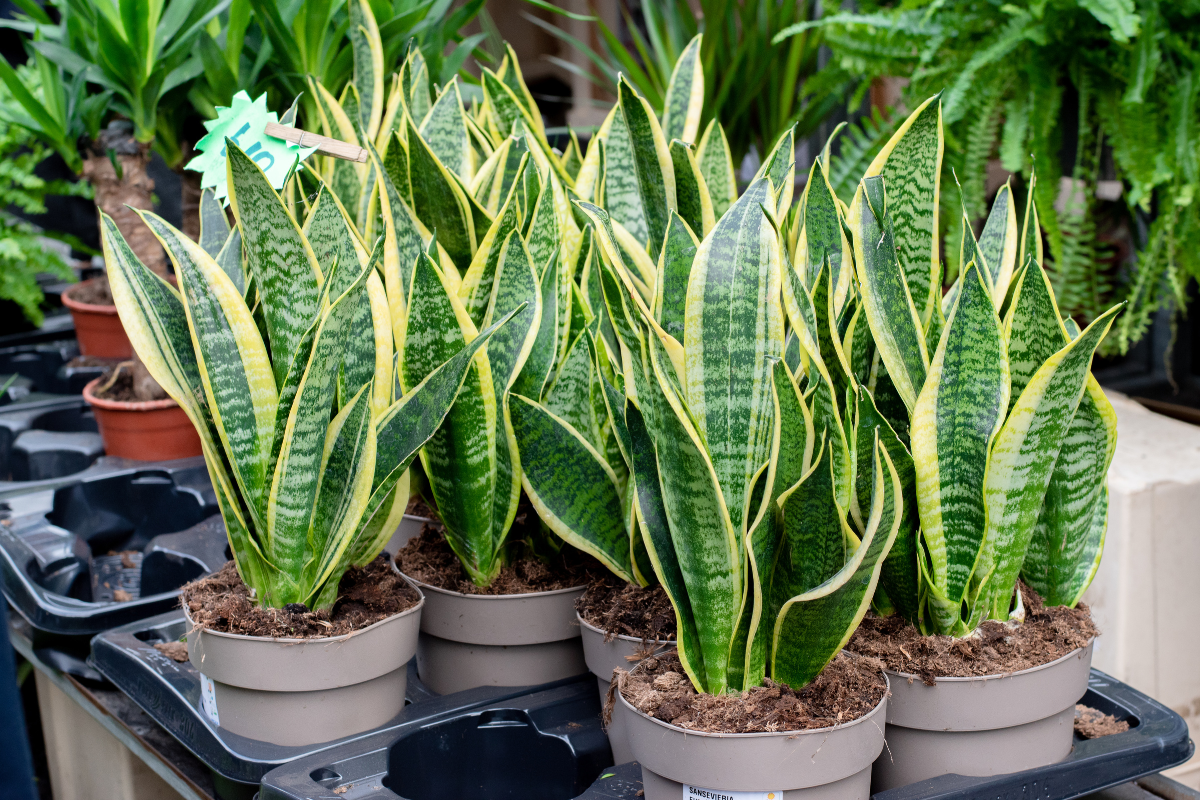
Another one of those plants that is undemanding of the owner’s care, the snake plant, is one of the most forgiving and lenient plants to own. Caring for it is straightforward and makes it one of the easiest plants to start.
You can neglect this for weeks, and they will still look as fresh as the first time you bought them. They will tolerate low light, more extended periods without watering, and have minimal problems with pests.
Place these plants in indirect sunlight and do not water them too much (and we mean it), especially during the colder parts of the month. Their soil should be allowed to dry completely in between waterings. Place a little bit of an all-purpose fertilizer in the pots, and these plants should be all set!
The snake plant is perfect if you’re looking for another great way to add color and freshness to your space.
RELATED: How To Propagate A Snake Plant: What You Need To Know
3. Monstera
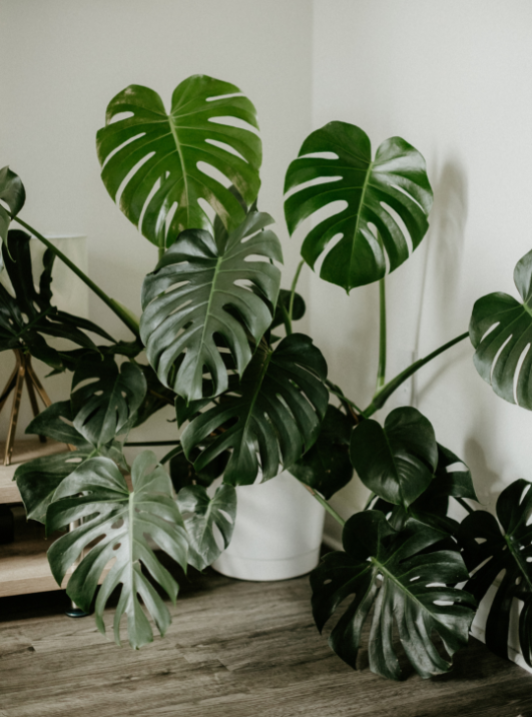
Monstera tropical plants are native to Central America and other tropical environments where they grow naturally as rainforest, outdoor plants. They are well known for their natural holes in their leaves, also earning them the nickname swiss cheese plant. However, this plant can also be grown indoors and can grow up to 10 to 15 feet tall and 8 feet wide.
This dramatic plant will add additional greenery, beauty, and uniqueness to any indoor setting thanks to its waxy dark green foliage with unique holes and slits.
Caring for this plant is simple, and it’s something that a neophyte should be able to manage. It will thrive in most home or office conditions. This will thrive in indirect sunlight so place it near a window sill. Use a loose and well-aerated soil.
For watering, you should allow the first 2 inches of soil to dry out completely between watering every 1-2 weeks. Another great plant to get your green thumb started!
4. ZZ Plant
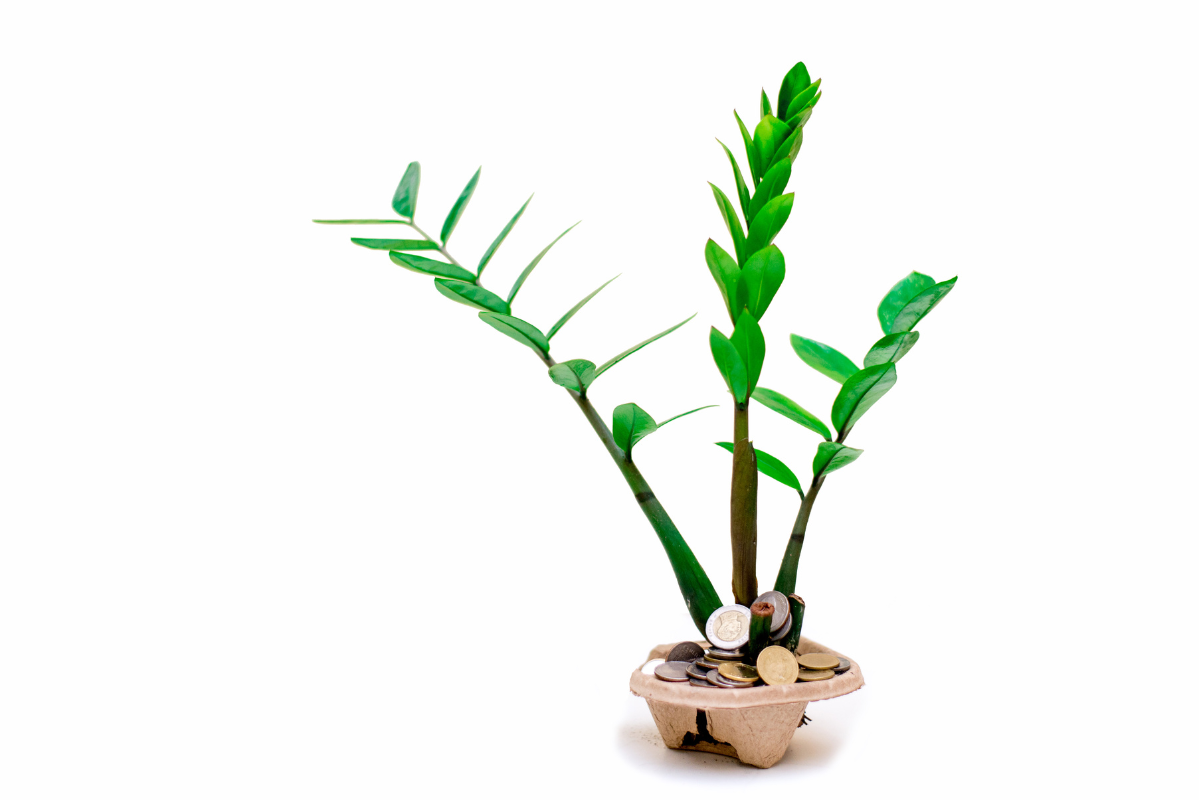
If you’re someone who couldn’t grow a plant no matter how hard you try, then the ZZ plant is ideal for you. This plant is essentially indestructible in every sense of the word and will happily thrive despite months of neglect and less than perfect lighting conditions.
They will still look fresh despite the neglect. They could even pass as fake plants due to them needing little maintenance at all.
These plants do well in bright indirect light but will also happily thrive in low light conditions, making them ideal in windowless spaces such as an office or a bathroom. Caring for these plants starts with not taking care of them at all! They don’t need a watering schedule; they will thrive for months without much water.
They also don’t even need that much fertilizer; a sprinkling once a year will suffice. If you’re the low-maintenance kind of person, then this plant will suit you perfectly.
5. Peace Lily
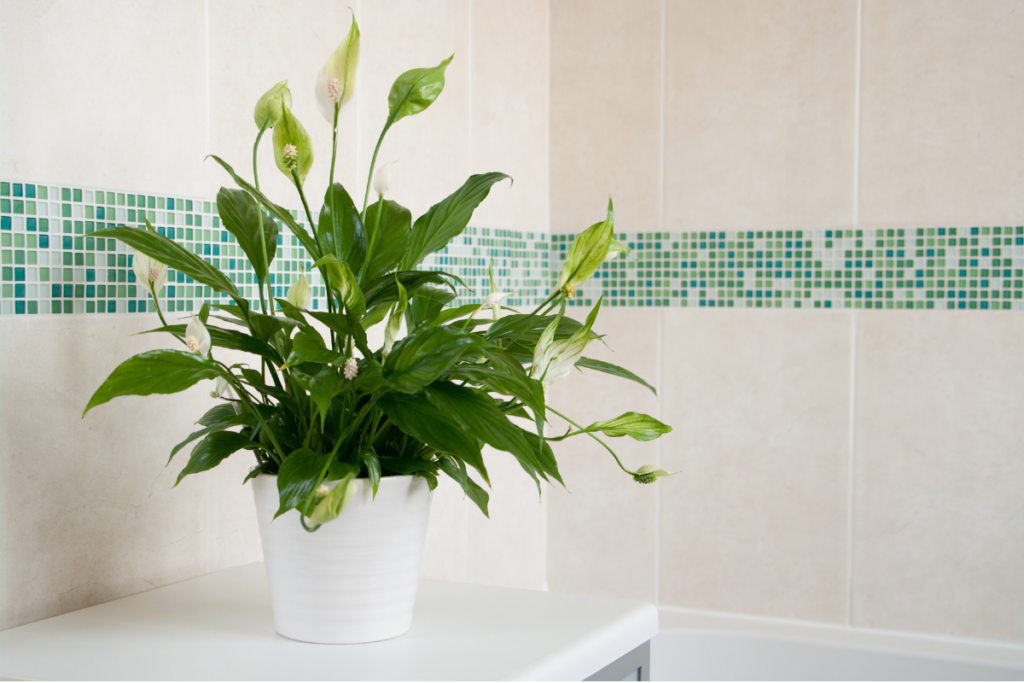
These plants have long, glossy leaves that bloom spade-shaped bright and white specialized leaf bract that covers its actual flower. They are well-known indoor houseplants for the home and office environment. They conveniently add color and contrast to any space they’re in. Just like most on this list, they are relatively easier to care for.
Most indoor plants will happily thrive in medium and low light. However, the only way for them to grow their bright flowers is in brighter, indirect light. If you can, place them near a windowsill, do so. If you enjoy their foliage more, move them to a shadier part of your space.
Do not overwater as they tolerate underwatering better than underwatering. Some will even wait for the leaves to droop before watering. They also do not need frequent fertilizing; once to twice a year is more than enough.
6. Aloe Vera
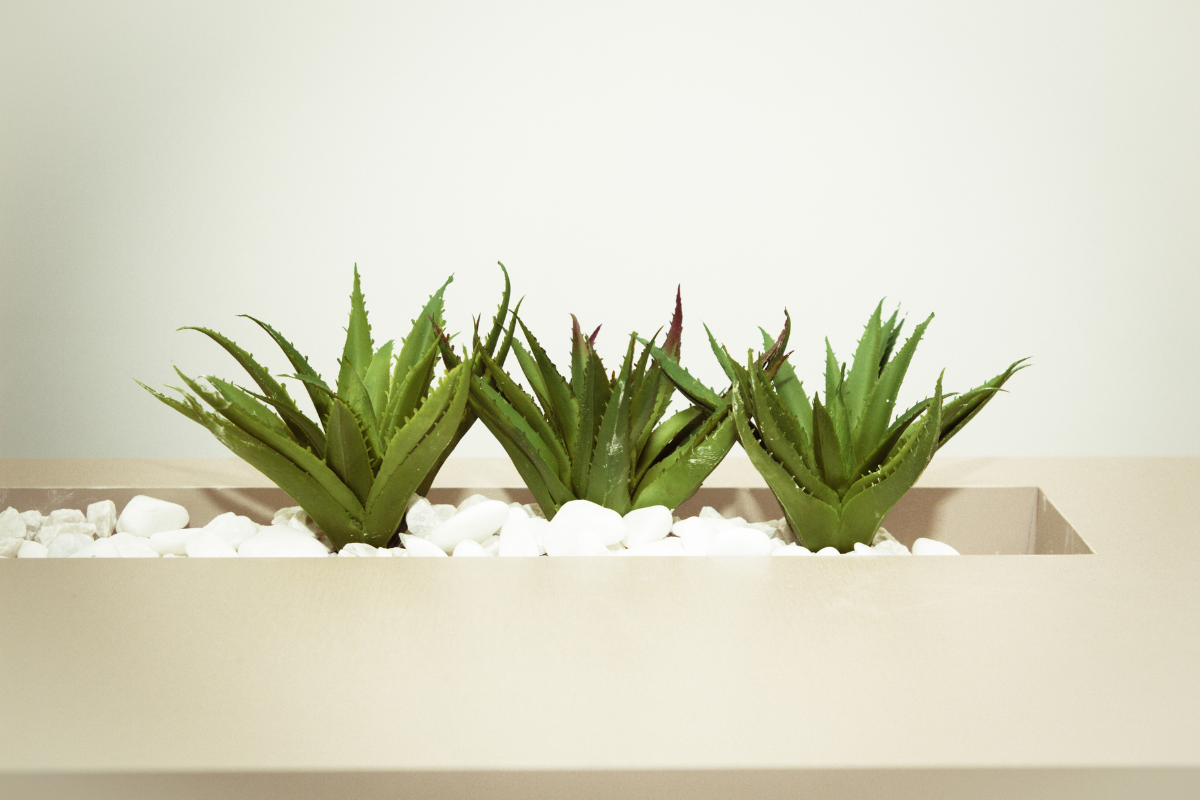
Aloe Vera’s natural habitat is usually in warmer climates, but it is now known as a popular houseplant. They add unique intrigue to any space that they are planted in and grow wider rather tall.
Aside from ornamental purposes, they also have medicinal properties, and their succulent leaves can also be eaten. So taking care of this exotic-looking plant is more straightforward than one might think.
The first step in taking care of this plant is realizing that it is a succulent. These plants do best in dry conditions. Plant them in a cactus potting mix and make sure their containers have plenty of drainage holes as they will not tolerate standing water.
Allow the entire topsoil (3 inches) of the Aloe to dry completely before watering. Unlike most of the plants in this list, this plant will need more light so place them near a window or space that receives a lot of it.
7. Moth Orchid.

Despite its exotic appearance, this plant is one of the more reliable bloomers in any given list of houseplants. They have over 50 species and over a hundred varieties that bloom with a wide chroma and shape of flowers that is sure to match any interior space and atmosphere.
Taking care of this plant requires a bit more thought than others on this list, but it is nothing that a beginner cannot handle. These plants are best grown in diffused and low light conditions but will tolerate bright, indirect sunlight. They can also grow in fluorescent lights.
Please do not plant it in a regular potting mix but rather in a coarse-textured, soilless mix. Their ‘soil’ should remain moist and dry out slightly, but never completely, in between waterings. Provide fertilizer only when you notice new growth. Take care of this plant; it will give you indoor blooms for months.
8. Peperomia
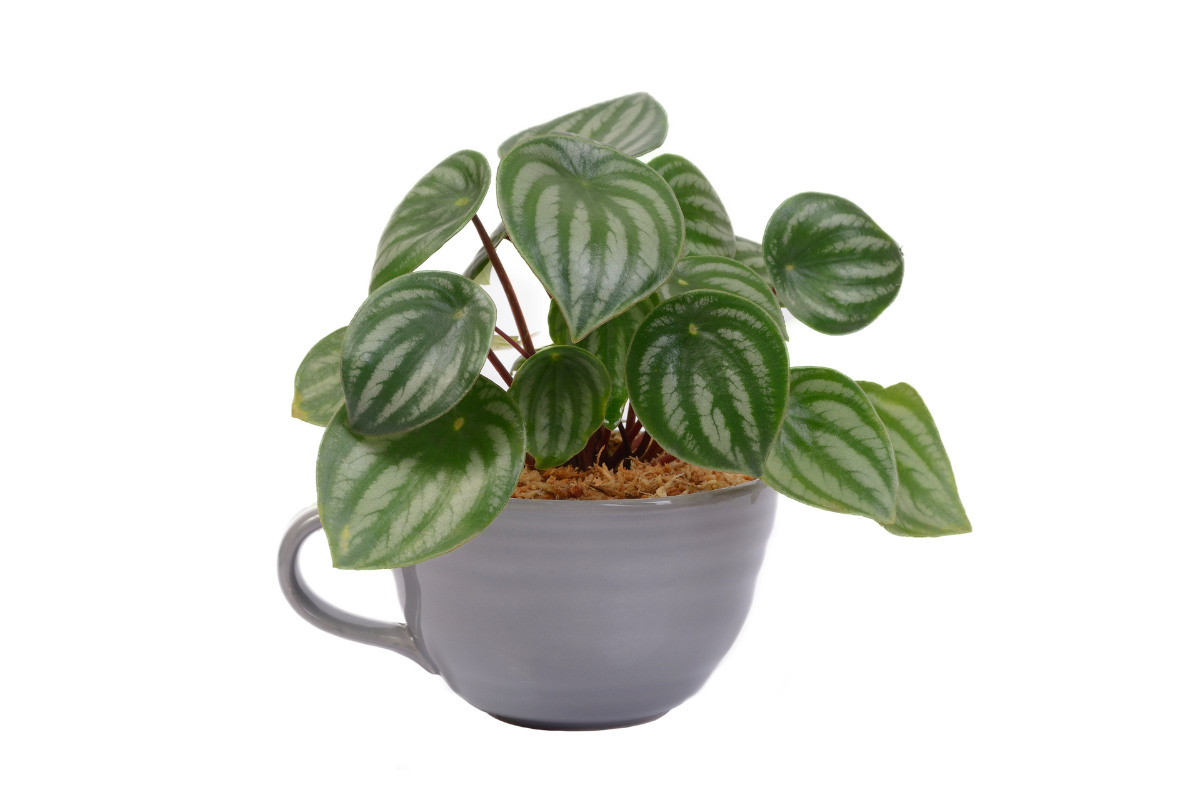
Another well-known succulent has become prevalent due to its glossy, broad, and ease of care. They are adaptable, provide attractive foliage to any home or office space, and are pet-friendly, which may be necessary for some. They also bloom flower spikes but are more well-known for their foliage.
Its care is also relatively easy. There are a lot of varieties of this plant, but they all happily thrive in bright light but will also happily grow in low light. Allow the topsoil of the plant to dry out completely before watering every 1-2 weeks. They are resistant to most pests, so you won’t need to worry about them too much.
RELATED: Peperomia Hope: A Complete and Concise Care, Propagation, and Watering Guide
9. Norfolk Island Pine
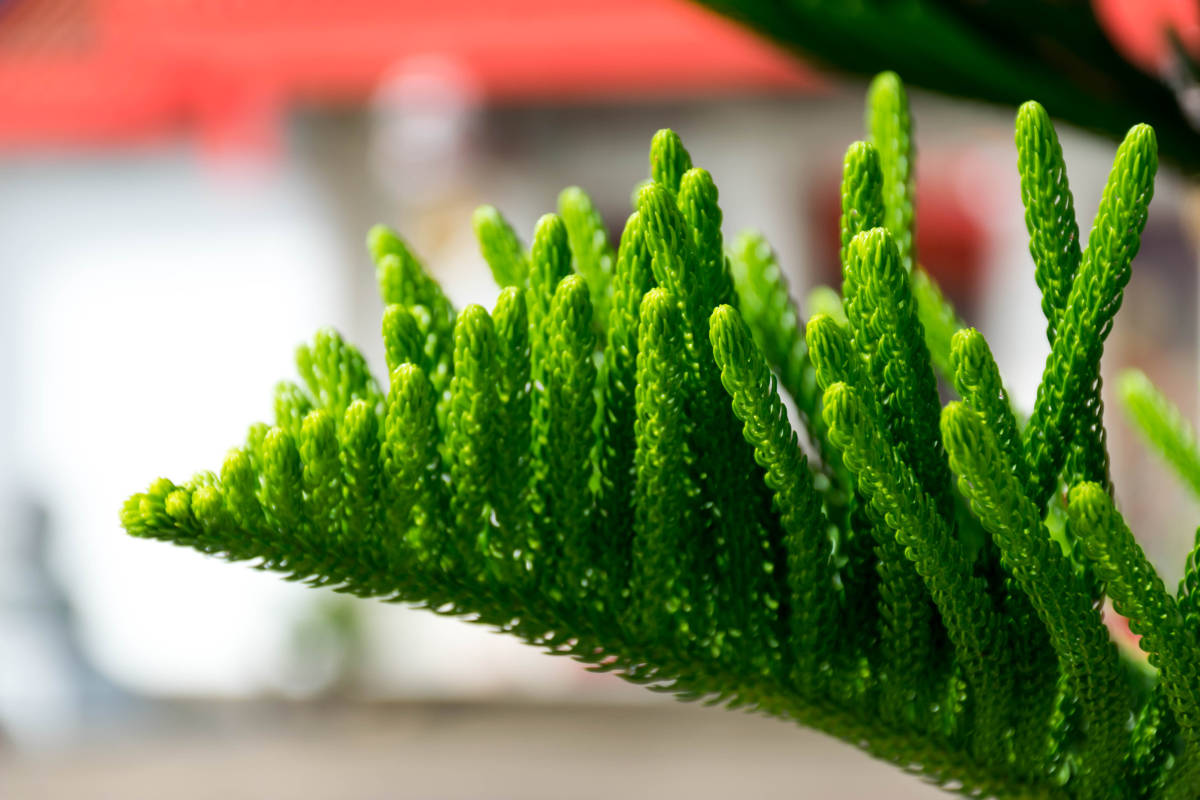
One of the more unique plants on this list as this is a plant that is an indoor house tree! Yes, you read that right. This is a tree you can grow indoors. Their leaves are handsome and have soft needles that branch and droop slightly downwards. Even though their name might imply, their care resembles an orchid or gardenia more than a pine tree.
As compared to the plants on this list, this tree will require a bit more care on average. Since these plants are tropical, they will not tolerate the cold, so keeping them in the warmer parts of your home is better. They will also need high humidity and constant light moisture, especially in the cold weather where humidity significantly drops.
They will also enjoy direct bright light but also tolerates indirect bright light, so place them near a windowsill that receives a lot of sunlight! Water the plant when the top of the soil is dried out.
10. Money Tree
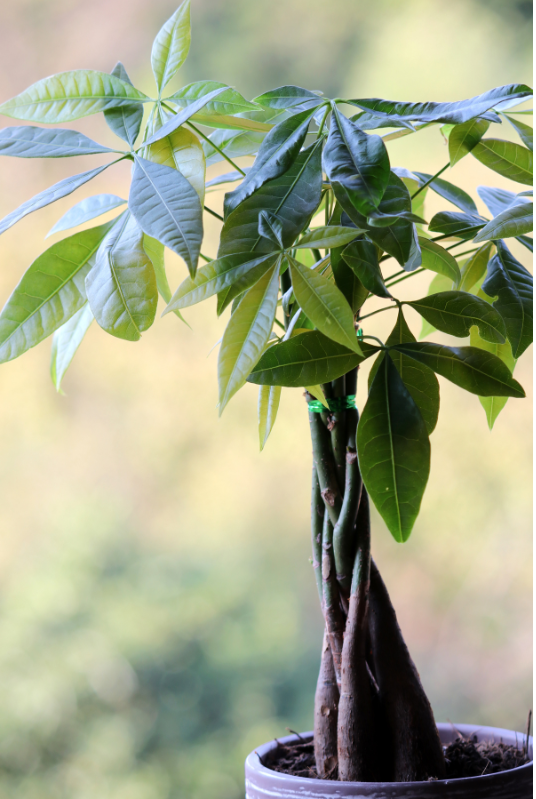
This plant has been popular ever since the 80s and may come in a braided stem or bonsai form. They provide a tropical and fun atmosphere to any interior space. In addition, it’s one of the easier plants to care for, especially for home or office spaces with no natural sunlight, which also lends to its popularity.
They receive their name from the practice of Feng Shui that this plant brings luck to the owners.
Since this is a tropical plant, it won’t tolerate cold conditions. They do best in full sun but will also thrive in lower light conditions. They do not require a frequent watering schedule; let the solid run dry before watering again. However, the plant will require more frequent fertilization every two weeks.
11. Senecio (String of Pearls)
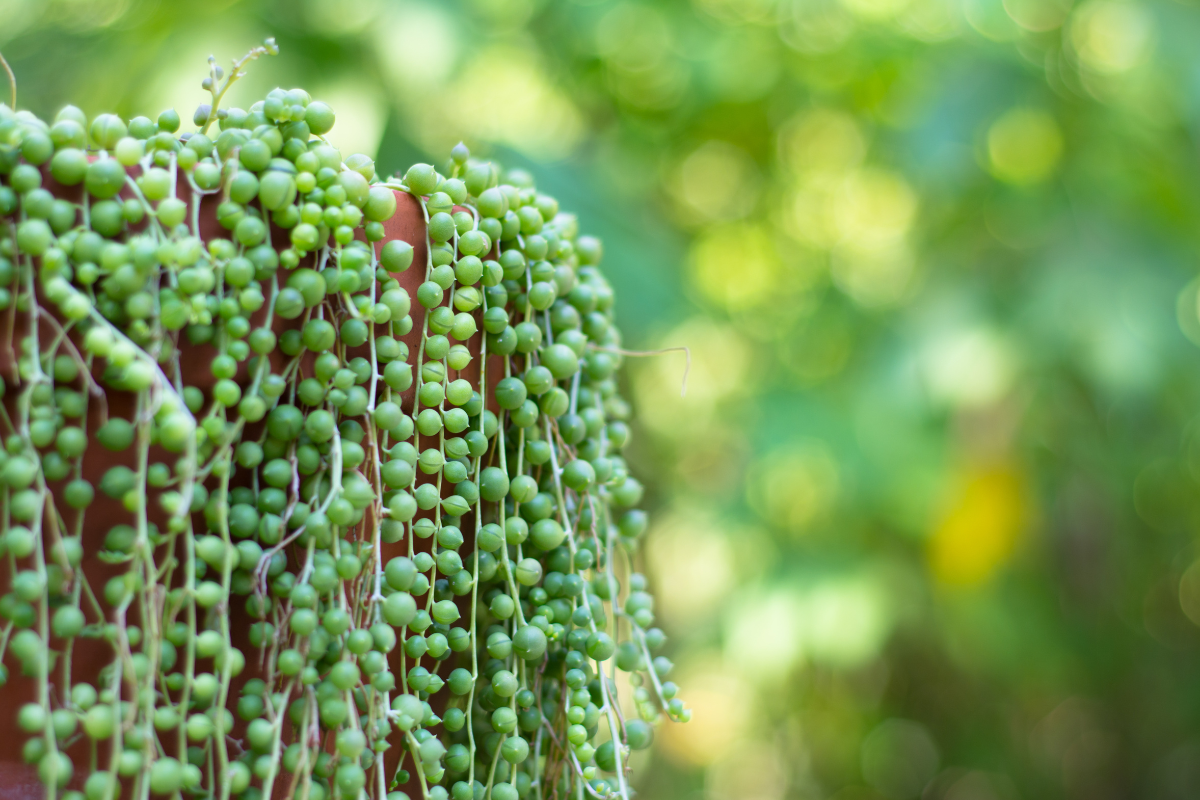
Another succulent on this list, the Senecio string of pearls, also known as string of beads, has been more popular over the recent years. They are easy to grow indoors and are well known for their carefree caring requirements.
Due to the appearance of their foliage, they add an interesting focal point to your space. When its white flowers bloom in the spring, they will fill any room with a cinnamon-like aroma.
These grow in bright light, including full and direct sunlight. They do better in looser and sandier soil, similar to cacti and other succulents. Plant them in a hanging basket so their trailing foliage can hang. They tolerate long periods without water, so only water them when their soil fully dries.
12. Christmas Cactus

Again with another succulent, this succulent lives for decades and comes in a wide array of colors and shapes, which is sure to fit in any interior space. Its care requires little attention, and it is a perfect winter flowering plant. Along with these benefits is that it is incredibly easy to propagate, making it an apt gift for the season of giving!
This plant thrives happily in your average home conditions. They adapt in low light conditions but bloom more if given brighter light. They will also require thorough watering in their active growing phase in the spring and summer. Allow the soil to dry out before watering, and never let the plant sit in water.
When the plant stops flowering, allow more extended periods of drought before watering.
13. Philodendron
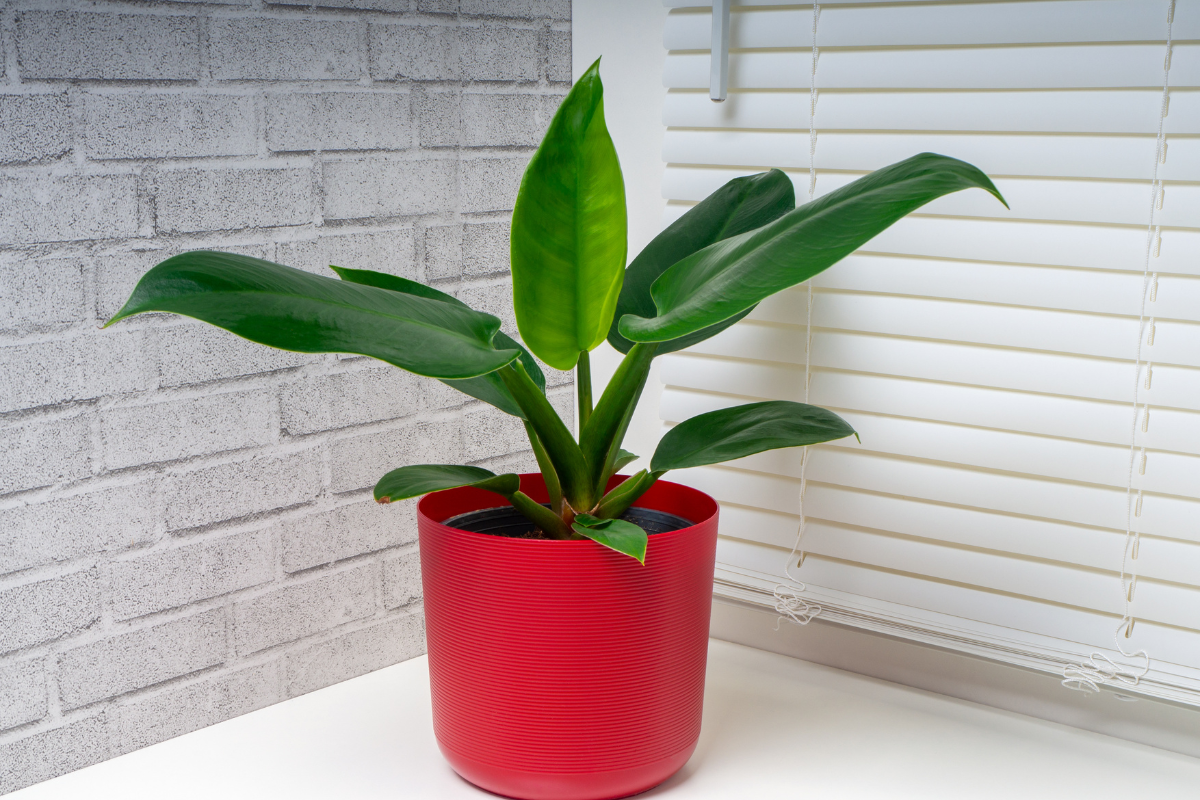
This is one of the most well-known houseplants and has served as one of the bulwarks of interior gardens. It has both climbing and upright varieties, so it is sure to fit any space as well.
It is easy to care for because it gives you plenty of signs that tell you precisely what the plant needs. This is perfect for the beginner gardener who is willing to put a little more effort into caring for a plant.
It is going to need bright and indirect sunlight but will tolerate some periods of lower light conditions, so be sure to place this near a windowsill that receives a lot of light. Allow the topsoil to completely dry out before watering. This is all the plant will need. Give it fertilizer every month in the warmer seasons and every two months in the colder seasons.
14. African Violet
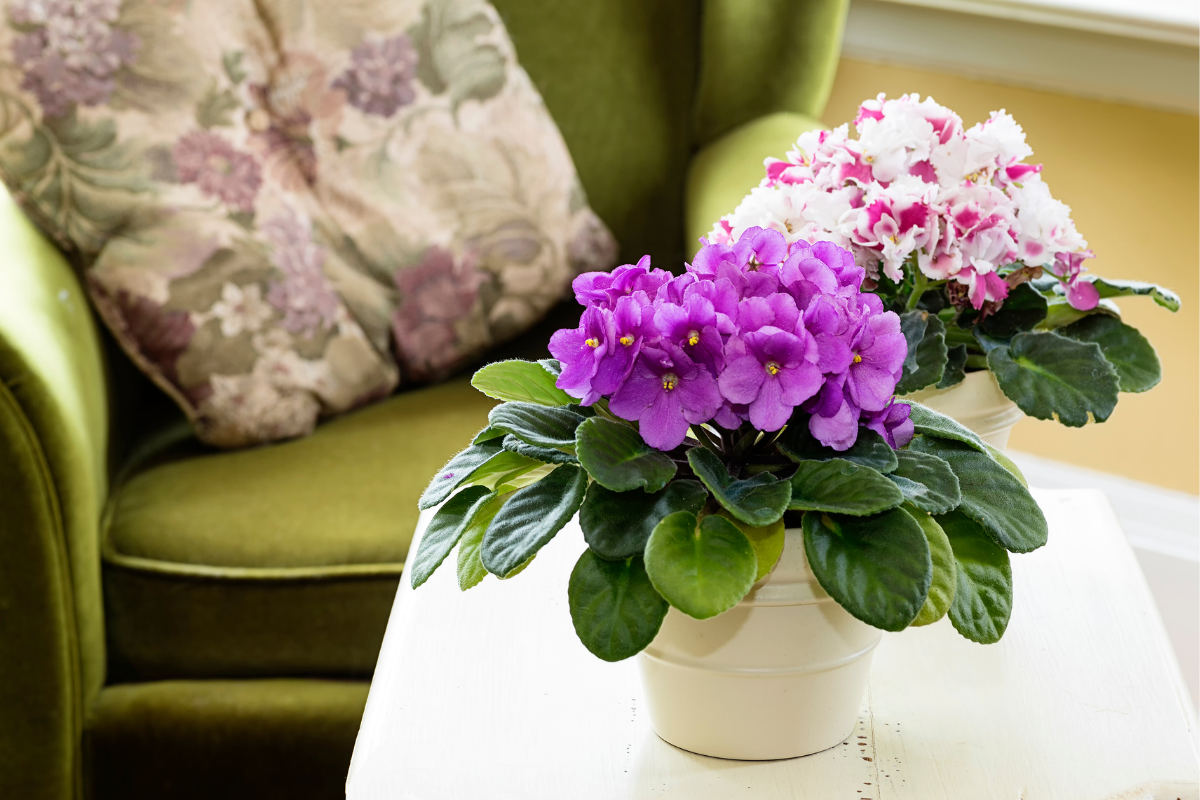
Another houseplant that is ideal for the gardener that is willing to devote a little more love. They bloom flamboyant flowers accompanied by even more pompous foliage, making them suitable for adding luster to your space or for complimenting an already elegant one.
Place this plant in a spot that receives medium and indirect sunlight. Depending on your variety, darker-leaved plants will require more light than those with lighter leaves. Water the plant when the soil feels less moist but never let the soil run dry.
However, it is also important not to let the plant stand in water and do not get water on its leaves. When its blooms are spent, cut them out to encourage more blooms.
15. Rubber Plant / Rubber Tree
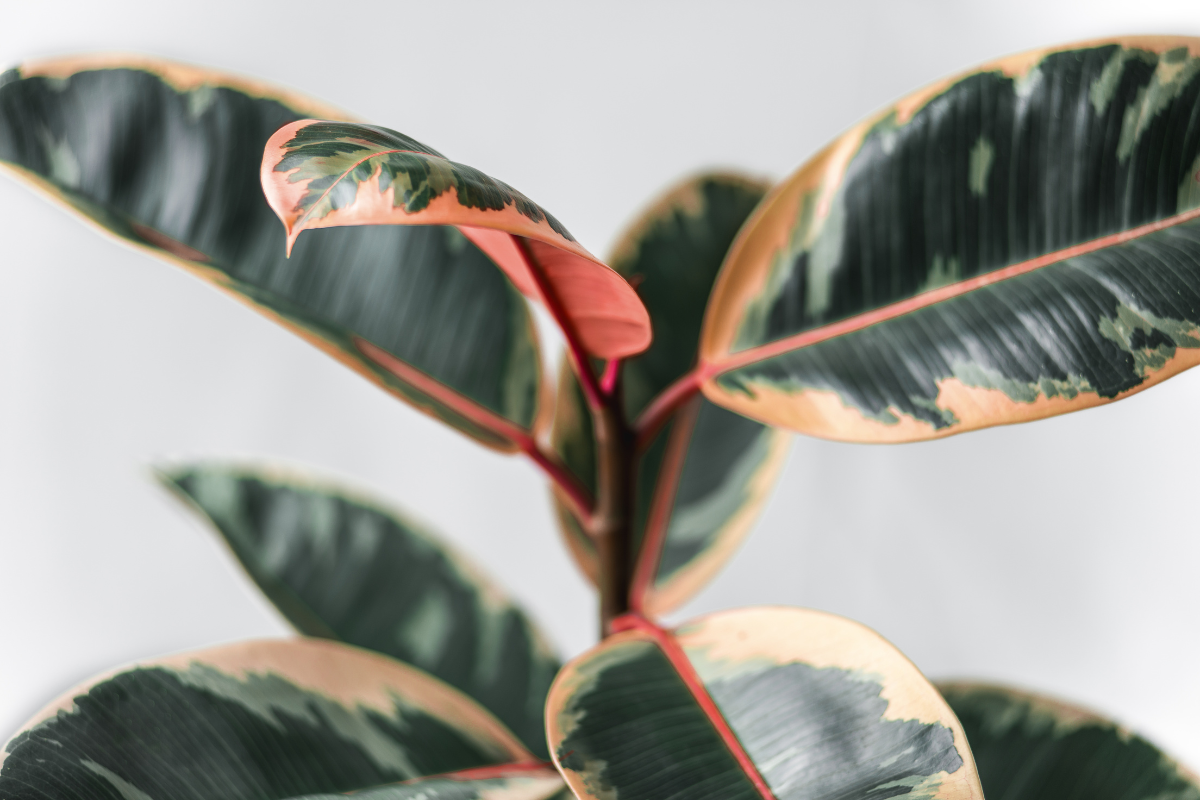
Another tree on this list, the rubber tree, suits well in any home or office environment with its elegant, dark, and leather-like leaves. When given enough space, this plant grows as tall as 10 feet! You will not find any trouble placing this plant anywhere in your home as they suit most indoor environments quite well.
Rubber plants will enjoy bright indirect light that is not too hot but will also tolerate both brighter and lower light conditions. Allow its soil to run dry slightly before watering, but never let it run completely dry. Keep the soil moist. During its growing season, its soil needs to be moist and watered at least once a week. In its dormancy, reduce frequency to once to twice a month.
16. Chinese Evergreen
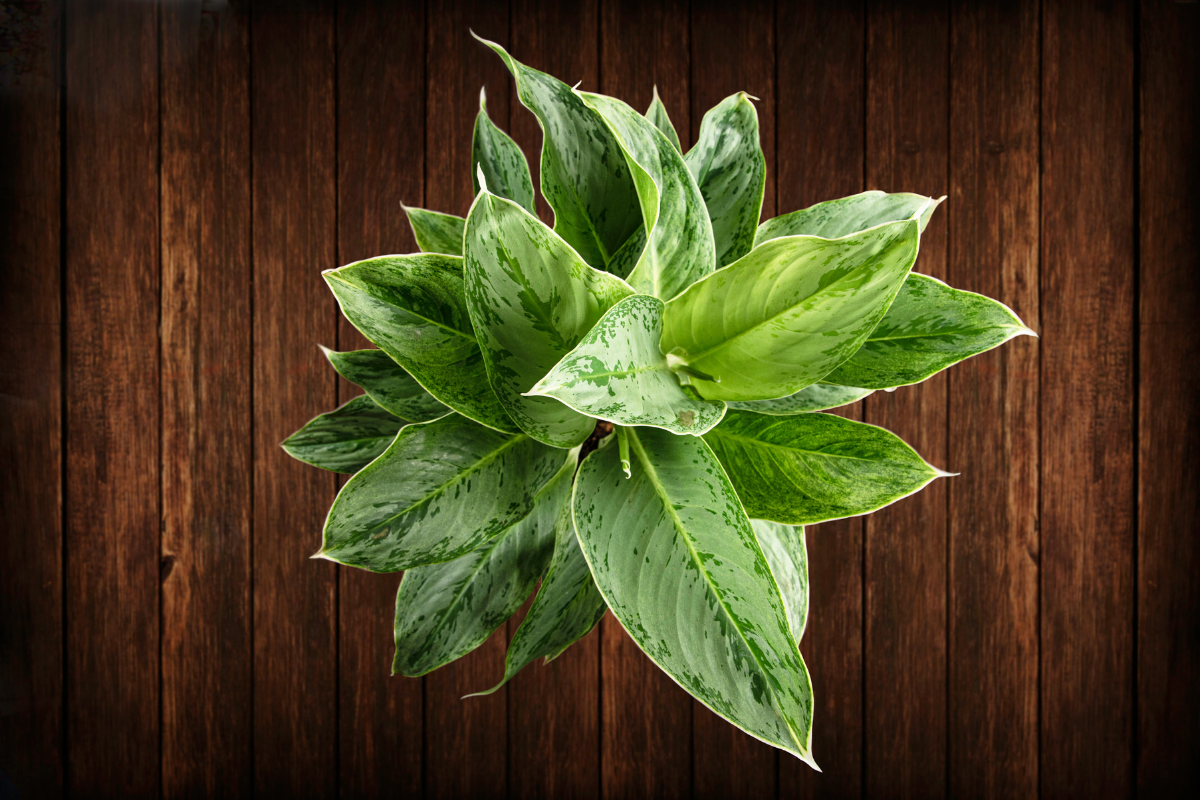
Depending on your variety, this plant’s foliage comes in shades of silver, gray, green, and even pink and red! This makes them ideal for complementing any interior elements or serving as one of the focal points of your interior design! In addition, they prove to be an excellent choice for brightening up any low-light area of your home or office.
Like the other plants on this list, this plant does not require much attention from you for it to grow happily. Please place them in a loose and well-draining soil. They happily thrive in low and indirect sunlight conditions and warmer temperatures, so putting them near a windowsill is ideal.
Allow the soil to run slightly dry before watering, and do not let the plant sit in too much water. Fertilize this plant once or twice a year. If given enough care, this plant will thrive for you!
17. Dieffenbachia
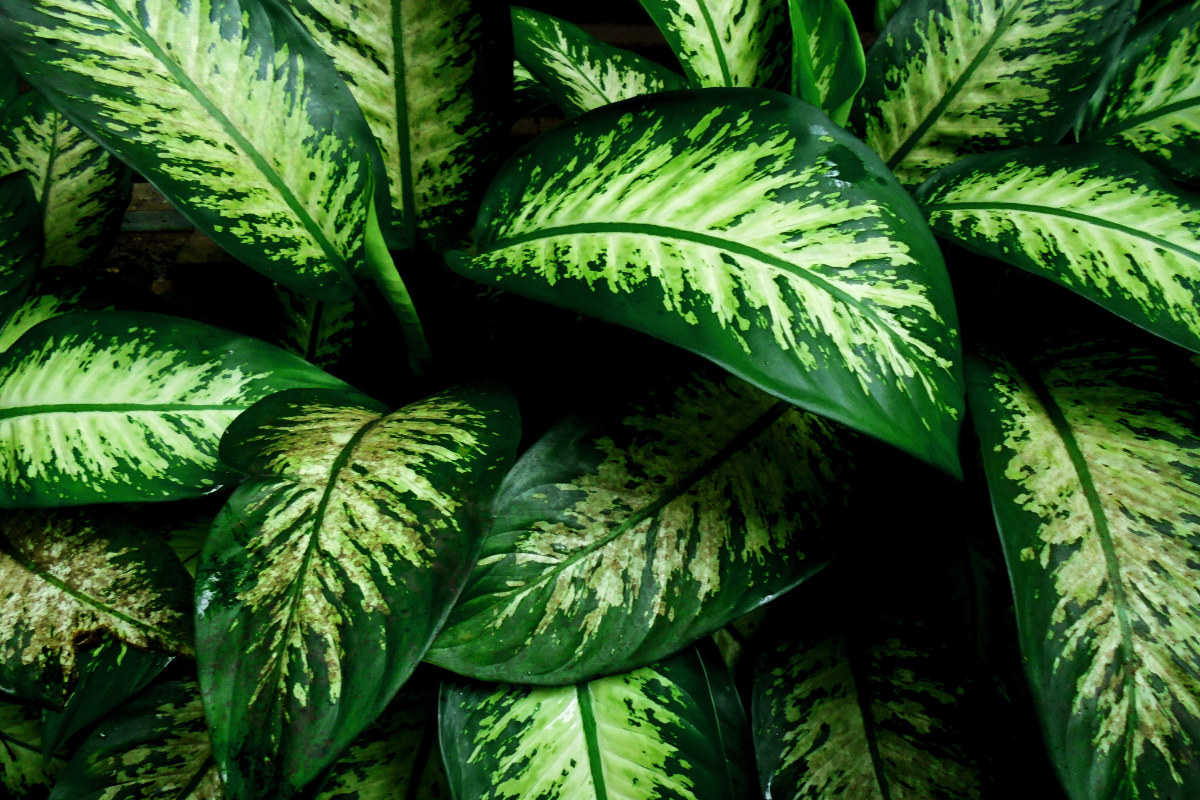
Another low-maintenance plant on this list, Dieffenbachia provides excellent and showy leaves that are sure to add a tropical vibe to your space. Its foliage can be variegated in white or cream. Its show of foliage does add a warm and tropical vibe to your office or home space.
It is resilient to general lighting conditions and situations that most do not expect from a houseplant. Keep it near a spot that receives low to moderate and indirect sunlight. Plant it in well-draining soil and keep watering light, keeping the ground evenly moist but not watered down. Allow the top 1 inch of the soil to dry out completely before watering.
18. Dracaena
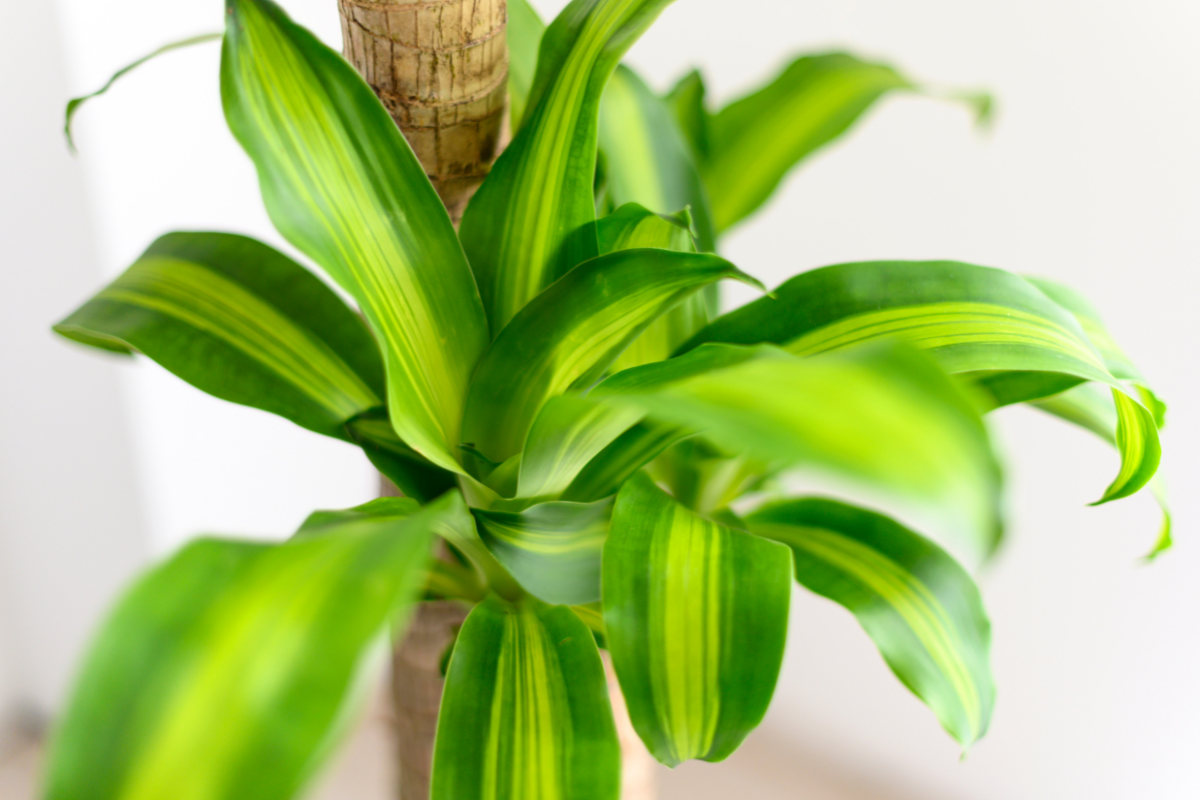
One of the most popular houseplants throughout the world, the Dracaenas boast of their long, strappy leaves that are variegated with multiple colors such as cream, red, or white. These plants are common inside homes, as they are made as centerpieces or focal points in indoor garden scaping. In addition, the young plants are often used as tabletops.
Since the plants can grow up to 1-10 feet in height and 1-3 feet in width, they require bigger floor space. Medium to bright light, with a temperature of 65-75 degrees Fahrenheit, is best for these houseplants.
19. Spider Plant
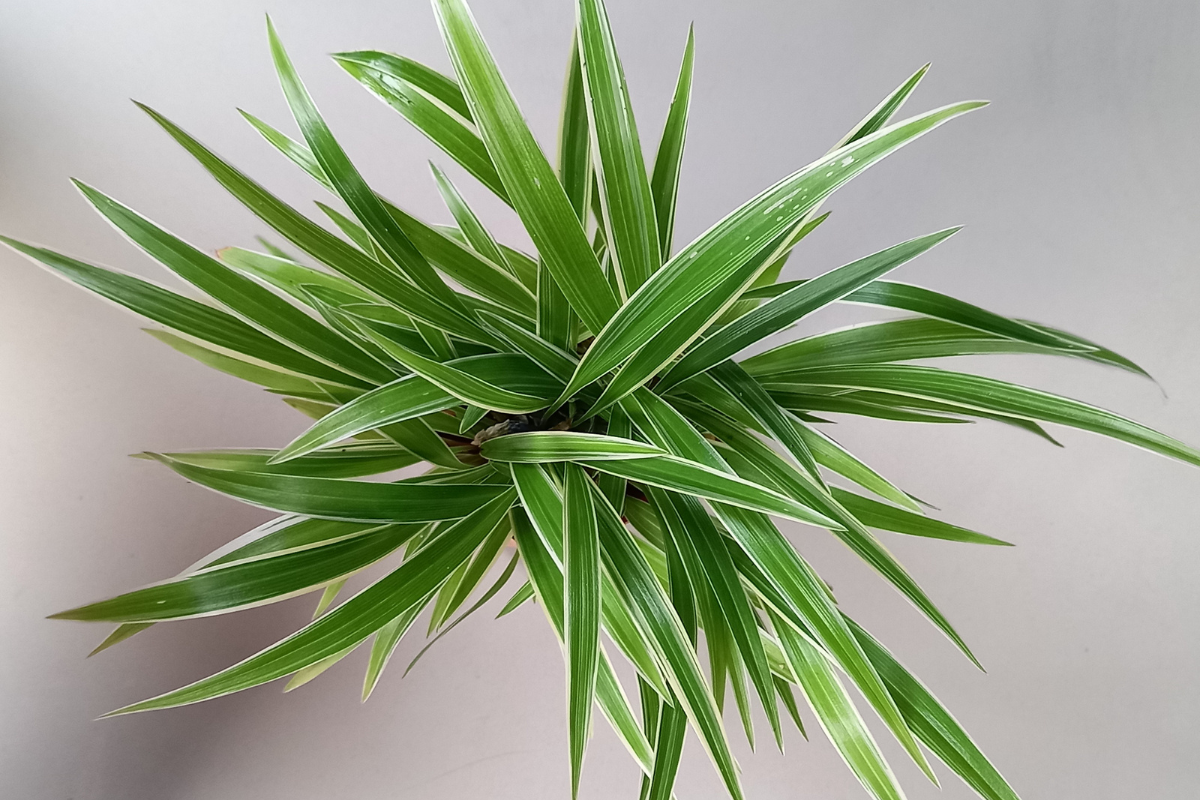
Spider plants are one of the most easy and adaptable houseplants around the world. They thrive in a wide range of environmental conditions and have few problems. This plant is a so-called spider plant due to its spiderettes, or spider-like plants, which hang down from the mother plant like spiders dangling from their webs.
Care for spider plants is easy. They flourish in bright, indirect light and in moist, well-draining soil. As a result, they are good plant candidates for new plant enthusiasts and beginners.
20. Jade Plant
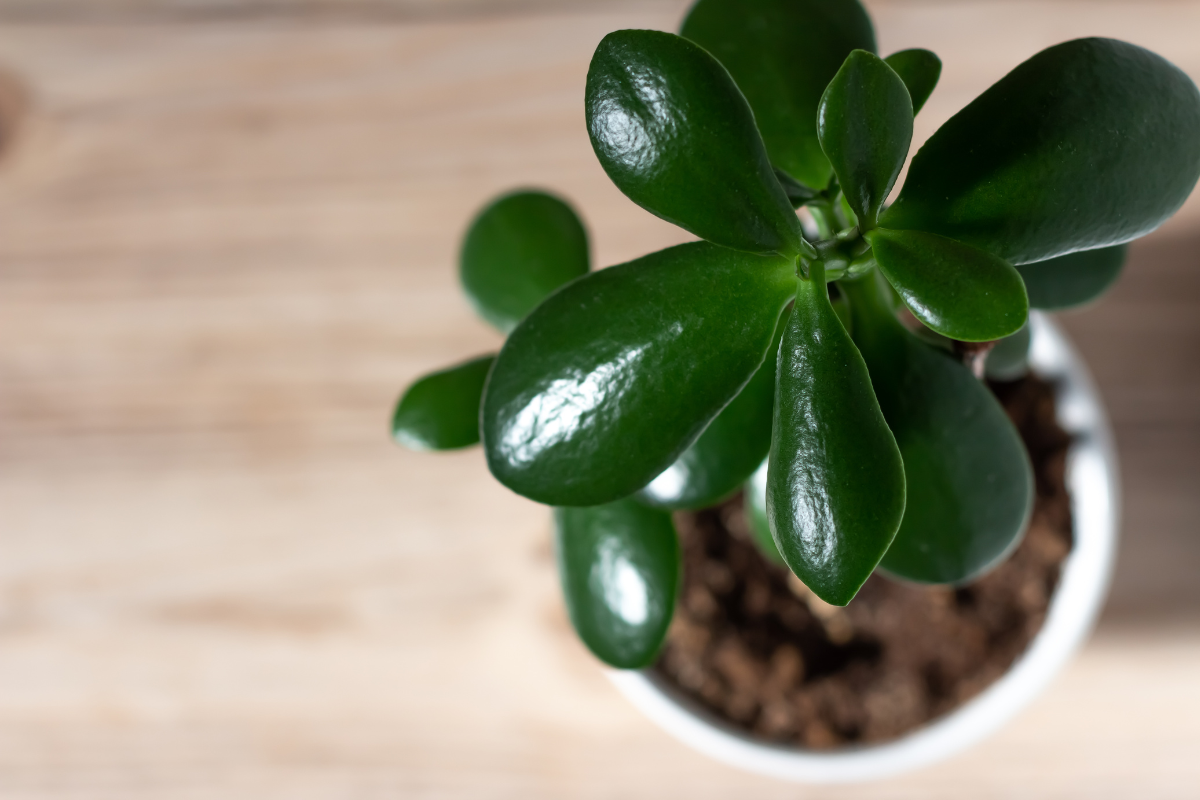
Jade plants are among the most popular succulent houseplants, not just because of their beauty, but also because they are thought to bring good luck to homes. As a result, they are often used as housewarming gifts. However, pet owners should be careful when they place this plant indoors as they are toxic to pets.
Jade plants are not demanding in terms of care and attention. However, their fleshy nature makes them susceptible to water rotting and a handful of plant diseases.
RELATED: Types of Crassula Jade Plants – Bring Happiness and Prosperity to Your Home
CONCLUSION
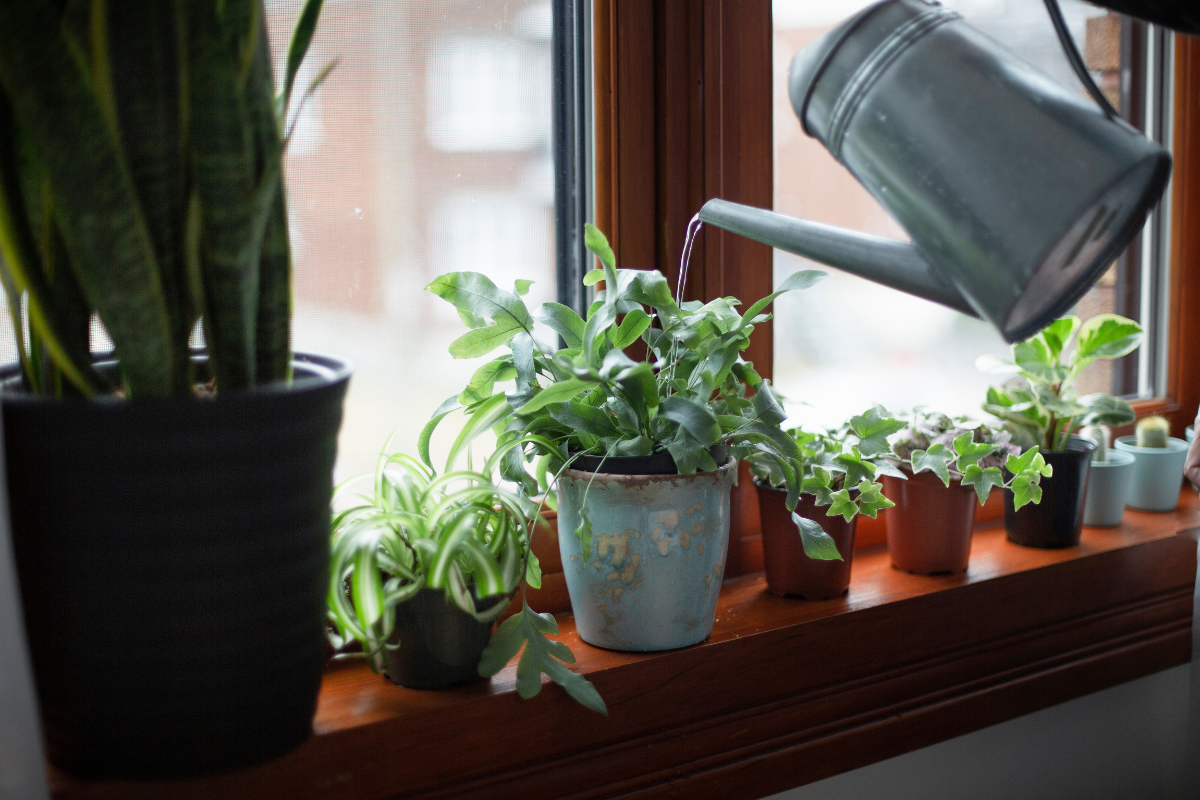
Remember, plants are also living things, so whatever you decide to choose, be sure to give it all the love they may need. No matter how low maintenance they may be. Take good care of them, and they will also take very good care of you!
We hope this list has given you one or several ideas for you to get started on your journey of growing a greener thumb.
Frequently Asked Questions
How do I identify my houseplants?
Identifying your unknown plants can be a crucial task. Unfortunately, plants can be so hard to identify due to their close similarities to one another. Traditionally, you can identify any plants using the characteristics of their leaves, flowers, fruits, stems, and even roots.
However, with the advent of technology, many plant identifier smartphone apps are available that can help you. With just one snap of a plant, you can now identify your plant.
Are eggshells good for plants?
Eggshells have a lot of benefits to garden soils. They are high in calcium, which helps you maintain optimum soil acidity, while they also provide plant nutrients. However, you would need many eggshells to make an observable effect on plants.
Is it good to sleep next to a plant?
According to studies, plants in near proximity to your bed can improve your night sleep. This is because houseplants produce additional oxygen inside your room. More oxygen means a better night’s rest.
Can you have too many houseplants?
There is no such thing as too many houseplants. You can plant as many as you want, as long as you can ensure proper care and attention to all of them and there is enough space for them to grow on.
Should you dust your plants?
It may seem like a laborious task, but it is important to dust your plants. Dust buildup on the leaf surface minimizes the plants’ capability to photosynthesize, thus making their growth slower. Plus, if you have dust allergies, you really don’t want to trigger it with your plants around.







